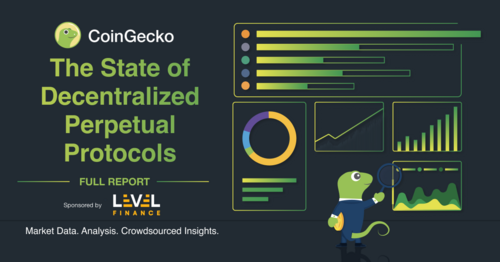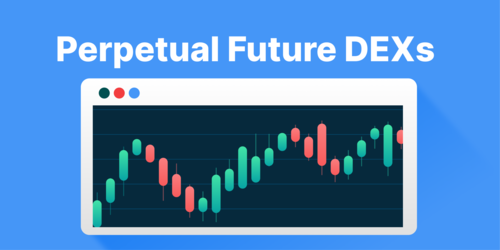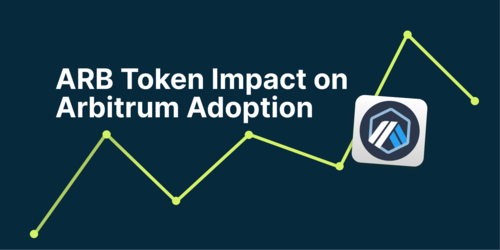Key Takeaways
-
Gains Network is a decentralized derivatives trading platform built first on the Polygon network and expanding to other decentralized networks.
-
On gTrade, crypto derivative traders are allowed up to 150X leverage and up to 1000x for forex trades.
-
Leverage trading on Gains Network is powered by synthetic assets and a decentralized lending protocol and its leverage system saves users the loan fee paid on other leverage trading platforms.
-
The GNS token is the native token of the Gains network and supports its financial system. It will be used for DAO Voting when GNS's decentralized government goes live.

First on the to-do list of the Gains Network team is to develop a product that “becomes the most adopted decentralized leveraged trading platform”. To realize this vision, it claims to be developing a liquidity-efficient, powerful, and user-friendly decentralized leveraged trading platform. These qualities and even more it claims to be the main features of gTrade; its leverage trading platform.
Through gTrade, Gains Network will attempt to lure perpetual contract traders with a decentralized platform that maximizes their profits while allowing them retain full custody of their assets. Perpetual contract traders will also hope to benefit from the low fee plan on gTrade and the zero fee on leverage loans.
Gains network launched gTrade on 2nd May 2022 on Polygon Network. Since this time, it has served over 450,000 trades from over 6,000 unique traders and has grossed over $19 million in trading volume. The team has announced plans to expand this product to other smart contract networks.
But what is Gains Network, and what is perpetual contract and leverage trading?
What is Perpetual Futures Contract Trading?
Perpetual contracts are a special form of futures contracts. The major difference between perpetual contracts and normal futures contracts is contract expiration. The traditional form of futures contracts has a stated expiry date after which the contracts can no longer be traded. In contrast, perpetual contracts have no expiry period. A perpetual contract trader’s position is valid for as long as they leave it open and maintain it.
The profit or loss will continue to accrue until the trader decides to close the trade, or the exchange liquidates the trader’s account in cases of unmaintained losing trades.
Compared to other forms of futures contracts, the price of perpetual contracts is tightly maintained with the spot price of the traded asset. The perpetual contract price could stray away from the spot price in extreme market conditions, but this happens less often than seen in traditional futures contracts.
What is Leverage Trading?
Leverage trading facilities let you enter a trade position with more capital than you own. They basically let you borrow against your capital and execute a trade. The profits made in the trade are calculated using the leveraged fund while your initial deposit serves as collateral against the funds borrowed from the leverage pool.
For instance, a perpetual contract trader entering a trading position with 10X leverage will have 10 times their initial deposit as the capital for that trade. That is; if their initial deposit is 100 USDT and they use 10X leverage, 1,000USDT is borrowed from the leverage pool while their 100 USDT is kept as collateral. A 20% profit in this trade will mean a 200 USDT gain. This applies to losing trades as well.
In cases where the trader runs into too much loss without adding more funds to their collateral, the account (for that trade) will be liquidated. On liquidation, the trader loses their collateral (initial deposit).
How Does Gains Network’s gTrade Work?

Contemporary leverage trading platforms suffer from undue centralization and a thin leverage limit. On the gTrade platform, traders are able to launch their trading without creating an account with their personal information or depositing their funds to a trading platform.
A simple wallet connection is all a user needs to start trading on the gTrade platform. Traders’ capital remains in their wallets and only moves on the wallet owner’s authorization. These procedures are guided by smart contracts. Asset prices on the platform are provided by a modified version of Chainlink’s Decentralized Oracle Network (DON)
gTrade also features an array of tradable assets for traders’ easy access. On the platform, users are able to trade cryptocurrencies, company stocks, and forex. gTrade offers traders up to 150x leverage on crypto assets, 100x on stocks, and 1000x on forex trades.
Platform users contribute to the pool from which leverage requests are served, and the pool is structured to generate profits for the contributors as part of an extra incentivization and interest-generating plan.
To make gTrade work in this way, Gains Network introduces four ‘tools’ that operate in synergy:
1) A decentralized vault and liquidity pool.
2) A multi-functional token
3) A protocol (consisting of collective algorithms deployed on blockchain networks) that aggregates other facilities and controls their functioning.
4) gTrade also features unique NFTs that give holders certain advantages and incentives on the platform.
gTrade’s DAI Vault
The DAI vault is at the core of gTrade’s functioning. It serves as a pool from which traders borrow funds to execute trades with a higher capital. The DAI vault is contributed by stakers. Stakers deposit DAI to the vault in return for earning interest. The interest received is dependent on the profits made by the vault. The vault is overcollateralized and decentralized.
To trade on gTrade, traders enter with DAI, regardless of the asset they are trading. The DAI is deposited into the DAI vault. The vault is overcollateralized and furnished by traders.
Overcollateralization ensures that there are more than enough funds for traders and that any mild deficits are easily managed and the platform kept stable. To achieve this, the vault’s (over) collateralization is set to 30%. Once it falls below this, measures are implemented to reclaim this collateralization level.
One of the measures is to trade the GNS token for more DAI and replenish the vault. This measure has been dropped for better approaches as the Gains Network team opines that this is not sustainable in extreme conditions. Current measures include increasing the vault collateralization and limiting DAI inflows to negative trade PNLs only.
Traders actively furnish DAI through their usual trade activities. However, the DAI vault is structured to profit from losses and shrink as traders’ gains overrun their losses. Profits for winning trades are paid out to traders through the DAI vault. The vault grows as traders incur losses and their negative PNL is paid into the vault.
If by any chance this collateralization level is exceeded by a wide margin, the extra DAI is used to buy back and burn the GNS token.
The vault is conditioned to grow against traders’ trading success. This structure was developed based on the fact that a majority of derivative trades have ended in a loss. This strategy has worked so far for the GNS team, with over $17 million currently locked in the DAI vault.
GNS: A Multifunctional Token
The GNS token is the native token of the gTrade platform and the Gains Network ecosystem. The GNS token serves as a utility token, a store of value for the ecosystem, and could gain an extra role when Gains Network's decentralized government goes live.
The GNS token was rebranded from the Gfarm token. In line with the rebrand, old Gfarm token holders received GNS tokens at the ratio of 1:1000. That is, holders received a thousand GNS tokens for every Gfarm token held.
The GNS token is used to incentivize the GNS/DAI pool which provides extra support for the DAI vault and the general liquidity of the gTrade platform. The GNS/DAI pool currently holds over $5 million worth of locked assets. This provides strong support for the DAI vault and solid liquidity for traders using the leverage trading platform or swapping between GNS and DAI on QuickSwap.
The Gains Network team also claims to be working towards instituting a DAO powered by the GNS token. GNS token holders will make up the DAO and will be able to contribute to the administration of the platform by voting on improvement proposals. According to shared insights, the GNS token will function just like other governance tokens. GNS holders will stake the tokens to receive veGNS which can be used to vote on proposals.
GNS NFT
Gains Network issued 1500 GNS NFTs which can be used on the platform. The NFTs span five categories and unlock several privileges and enhancements for holders. GNS NFT holders will receive more staking rewards depending on the category of NFT they hold. Liquidity staking reward boosts could be as high as 13% for diamond GNS NFT holders, while the lowest reward boost for NFT holders is currently 2% for bronze NFT holders.
Traders who hold the NFTs will also enjoy a reduced spread while trading. The percentage of reduction is again dependent on the type of NFT held. Gold GNS NFT holders will enjoy up to 35% reduced spread.
These benefits are cumulative for investors who own more than one of any categories or a combination of the categories.
If you’re looking to score one of these, GNS NFTs can be purchased on OpenSea.
What Tokens and Assets are Available on gTrade?
gTrade supports crypto assets and stock trading on its platform. The forex trading facility is also functional and supports up to 1000X leverage.
Notable stocks that can be traded on the platform include TSLA (Tesla), AMZN (AMAZON), GOOGL (Google), META, and NVDA (Nvidia).
For forex traders, gTrade offers EU, USD, GBP, CHF, and JPY.
For users who wish to trade crypto assets, BTC, BNB, ETH, ICP, FTM, FTT, DOT and many other cryptocurrencies can be traded on the platform.
View the full list of assets that can be traded on gTrade here.
GNS Tokenomics

The GNS token was developed to add value to the Gains Network and grow in value along with the platform as well. In addition to the token’s utilities discussed already, extra emissions and distribution plans have also been put in place to sustain the value and availability of the GNS token.
The total supply of GNS tokens is 100,000,000, of which about 29,000,000 tokens are already in circulation based on data from CoinGecko. According to the GNS team, about 20% of this figure has been burnt as part of the buyback plan using excess collateral from the DAI vault.
5% of the total supply has been reserved each for the developers’ funds and the GNS governance as well (10% of the total supply).
Where to Buy GNS token
GNS token is mainly traded on decentralized exchanges at the moment. Main trading platforms include Uniswap on Polygon network and QuickSwap, as well as BKEX. Here’s a list of active GNS trading pairs.
Staking Rewards

Gains Network rewards contributors. Especially ones that help build solid liquidity for the gTrade platform through the different staking pools. Rewards are powered by the two main assets in the pools, DAI and GNS. Rewards for DAI vault contributors are distributed in DAI. DAI stakers can enjoy up to 10% APR on their assets, although this is also dependent on the vault’s profitability.
GNS holders who stake their GNS tokens in the single-side staking pool can also earn up to 3% of the value of their staked asset.
Liquidity providers in the GNS/DAI pool enjoy over 80% APR when they stake their liquidity pool tokens on the platform. Rewards are generated from trading fees paid for GNS/DAI swaps on QuickSwap and leveraged traders on gTrade.
Note that these APRs might differ for investors who own GNS NFTs.
How to Trade on gTrade
GNS’s trading platform features a comprehensive user interface. To trade with leverage on gTrade, visit the gTrade app.

Click 'Connect Wallet' to start the setup process for your wallet. If you haven’t added the Polygon network, follow this guide to add it to your wallet.

You can switch between Polygon mainnet and Testnets by clicking on the Polygon dropdown, located beside your wallet address at the top right corner of your device. The Arbitrum network can also be selected from this location when gTrade is deployed to the network.
Ensure that you are on the intended network before proceeding.

You can change the user interface to suit you by clicking the ‘Settings’ icon beside your wallet address.
Leverage Trading on the gTrade Exchange

To use trade on gTrade, click 'Long' or 'Short' depending on the direction of your trade.

Select the pairs you wish to trade by clicking the asset list indicated and scrolling down to your preferred asset.

The leverage limits differ for stocks, forex, and crypto. This can be seen from the leverage slider.
Set the parameters of your trade: enter the amount of DAI you wish to deposit as your collateral and drag the slider to set your leverage. 
Establish your ‘Stop loss’ and ‘Take profit’ levels by clicking on the Price box as indicated above and setting up your exit levels and the percentage of your trade value you wish to trade at each point.

Check the calculated fees for your trade and liquidation price in the indicated area. If satisfactory, approve DAI and complete your trade. If DAI is already approved, there will be no need to repeat this step.
How Safe is Gains Network?
Gains Network's leverage trading contract has been live for about 5 months (at the time of this writing) and has processed over 460,000 trade transactions. Current reports show that these transactions were safely executed and users are yet to report any wallet breaches traceable to the Gains Network's platform. Gains Network also claims that its contracts are safe for use and have been audited.
An audit report by Certik affirms this claim but hints at mild vulnerabilities and a centralization threat. Provisions of this report have been acknowledged by the Gains Network team. However, it is essential to note that smart contract protocols are high-level computing commands and are prone to vulnerabilities that can be exploited in several ways. Having that in mind, it is advised that users do their own research and apply measures to keep their funds safe and limit losses in case of unexpected mishaps.
GNS vs. GMX
Like GNS, GMX also offers decentralized derivatives trading services with impressive leverage and trading protocol. Both share a good level of similarity; here's how they compare to each other.
 Want to learn more about GMX? We’ve covered it in detail here.
Want to learn more about GMX? We’ve covered it in detail here.
Final Thoughts
A zero-fee loan structure is a good point of attraction, but for Gains Network, a decentralized trading platform gives traders limitless control over their assets. The technology on which the platform is built also ensures that this freedom is not misused. Centralized trading platforms have tons of caveats, some of which Gains Network and similar projects are tackling. Massive leverage opportunity is the icing on the top, but it's also the most attractive feature for traders.
On a wider note, Gains Network and other decentralized derivatives trading platforms represent the successful development of an efficient decentralized version of a formerly centralized application.
If these solutions stay true to their promises, traders are offered a safer way to trade and an opportunity to maximize their earnings per trade. Notwithstanding, it is important to understand the basics of leverage trading, especially where it concerns making profits and losses. In general, apply caution while interacting with smart contract platforms and do your own research before investing in volatile assets like cryptocurrencies.

Joel is deeply interested in the technologies behind cryptocurrencies and blockchain networks. In his over 7 years of involvement in the space, he helps startups build a stronger internet presence through written content. Follow the author on Twitter @agboifesinachi





 Or check it out in the app stores
Or check it out in the app stores
